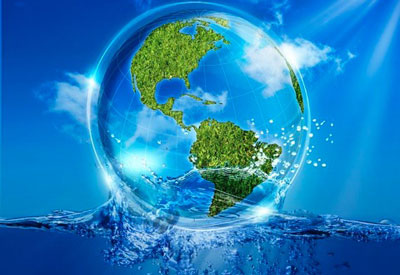|
Classification of Water |
 |
Most states draw legal distinctions between specific types of surface waters and specific types of ground waters. However, the recent trend has been towards regulating and managing surface and ground waters in conjunction.
Stormwater Runoff
Watercourses: A watercourse consists essentially of a definite natural stream, flowing in a definite natural channel, and originating from a definite source of supply.
Runoff: Waters that originate from rain and melting snow and that flow freely over the surface before becoming concentrated in watercourses or before sinking into the ground are runoff. Most regulation dealing with runoff is aimed at preventing erosion and pollution caused by runoff.
Ground Waters
Tributary: Underneath a surface stream, there is usually an underflow or subflow. This consists of water in the sands, gravels, and other subsoil over which the surface stream flows, moving in the same direction and in intimate contact with the surface stream. The boundaries may extend laterally for considerable distances beyond the banks of the surface channel. From a legal as well as a physical standpoint, the surface stream and the underflow are not two separate rivers, but are component parts of a single watercourse. Watercourses that are partially, or entirely underground are also generally considered to be tributary waters. Depending on the location, the produced water from oil and gas operations may be tributary.
Non-Tributary: Underground water that neither draws from nor contributes to a natural surface stream in any measurable degree. These are also refered to as sedimentary or fossil waters. The aquifers containing these waters generally have no ability to recharge and will be depleted by ongoing use. Depending on the location, the produced water from oil and gas operations may be non-tributary.
Water Definitions
- Water Withdrawals
Volume of freshwater that is taken from surface or groundwater resources.
- Water Consumption
Volume of freshwater that is taken from surface or groundwater resources and is not returned. There are concerns that hydraulic fracturing consumes a large amount of water. The water used in operations and pumped underground may remain in the well or be disposed elsewhere deep underground, making it unavailable for reuse. Water consumption metrics in most regions are poorly measured due to lack of consistent water sourcing disclosure and measurement statistics of water returning to the surface.
- Water Stress
Measures total annual water withdrawals (municipal, industrial and agricultural) expressed as a percentage of water available. This metric denotes the level of competition for water in a given region. The highest demand for water in most regions comes from agricultural or municipal uses followed by industrial uses. Water stress tends to be higher in regions of high population density or intense agricultural development. Water stress can be low even in arid regions such as North Dakota, where low population density and non water-intensive agricultural practices do not result in high water demand.
- Water Scarcity
Is the volumetric abundance, or lack thereof, of freshwater supply and increasingly accounts for water flow required to maintain the ecological health of rivers and streams.
- Water Risk
Refers to the ways in which water-related issues potentially undermine business viability.
- Brackish Water
Water that is generally saltier than freshwater, but not as salty as seawater.
Oil and Gas Water Definitions
- Flowback Water
Water returning to the surface directly after hydraulic fracturing. This water is often mixed with water found in the geological formation. The amount and quality (often poor) of plowback water returning to the surface varies depending on local geologic conditions and hydraulic fracturing fluids utilized.
- Produced Water
Water that returns to the surface along with the oil or gas that is being pumped from the well.
- Recycled Water
Water utilized a second time in hydraulic fracturing operations after undergoing treatment for contaminants.
- Reused Water
Water utilized a second time in hydraulic fracturing operations with minimal treatment requirements.
- Water Used for Enhanced Oil Recovery (EOR)
When water is pumped underground to increase pressure in a well to boost lagging oil production (generally after a reservoir has been depleted). EOR can require far larger volumes of water than the average well requirements for hydraulic fracturing operations.
- Drilling Water
Water that is used, often in conjunction with other chemicals, to cool and lubricate the drill bit and carry out drill cuttings during the drilling of the borehole.
|






